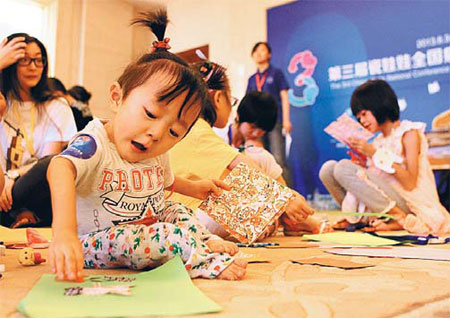Life as a living doll
|
Wu Yulinglong, a 6-year-old from Shaanxi province, joins a drawing contest organized by China-Doll Center for Rare Disease. |
Last year, she finally underwent OI treatment in a hospital in Tianjin, with the help of Wang's center, which the father chanced upon when surfing the Internet.
Currently, to increase bone density and reduce the number of fractures, the girl receives drug infusions every three to four months, costing about 2,000 yuan ($326) each time.
The father also plans to send her for surgery to correct her deformity.
Wu Yulinglong is luckier than many OI patients in China as her family is able to afford her treatment.
OI is a lifelong condition and needs continuous treatment, including medication to increase the density of the bones. Otherwise, the bones and muscles will deform rapidly, especially during childhood.
But few hospitals in big cities know how to treat OI, let alone those in less-developed rural areas, according to Qi Ming, a genetic diseases specialist with Zhejiang University, who is also a professor with Department of Pathology and Laboratory Medicine, Rochester University in the United States.
He says in many developed countries, such as the United States, the cost of OI treatment is covered by various medical insurance programs.
There are also a lot of nongovernmental organizations and foundations engaged in activities protecting and helping OI patients, such as funding for OI-related research and launching legislation campaigns to protect the interests of OI patients. But there are few in China, Qi adds.

















